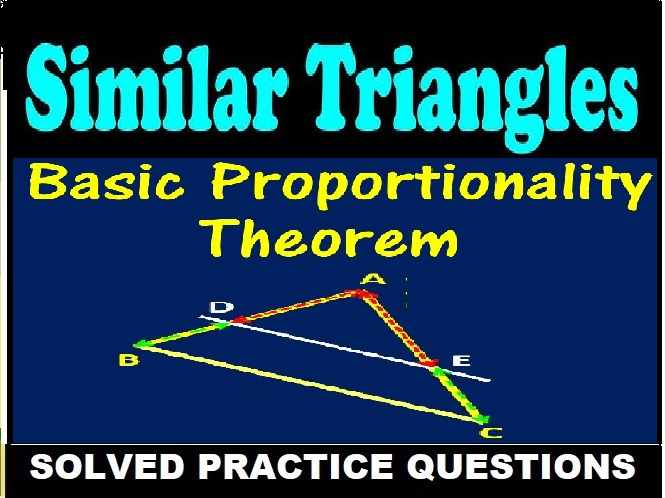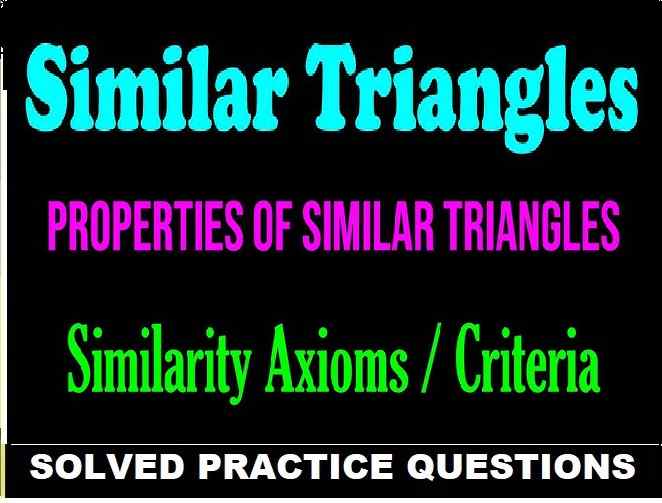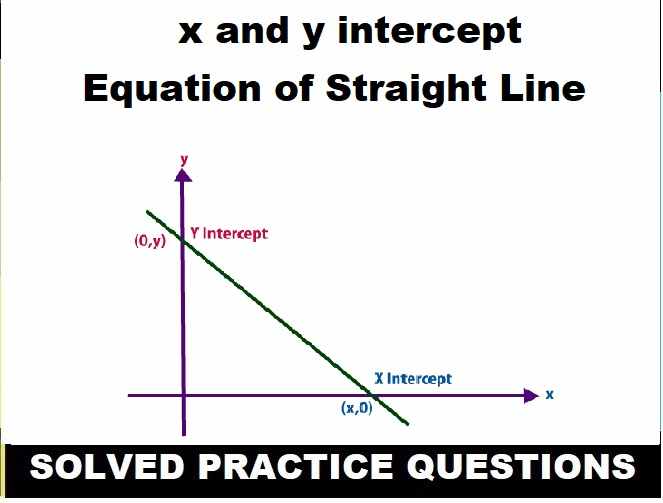ISC Maths MCQ Functions Class-12 Semester-1 for 2021-22. These MCQ / Objective Type Questions is based on latest reduced syllabus according 2021-22 session on bifurcated pattern. Main motto of MCQ Type Question is cracking the next upcoming exam of council. Visit official website CISCE for detail information about ISC Board Class-12 Physics.
Semester-1 Exam of 2021-22 ISC Maths MCQ Relations for Class-12
| Board | ISC |
| Class | 12th (XII) |
| Subject | Maths |
| Chapter | Functions |
| Syllabus | on bifurcated syllabus (after reduction) |
| bifurcated pattern |
Semester-1 |
| Session | 2021-22 |
| Topic | MCQ / Objective Type Question |
Class-12 ISC Maths MCQ Relations for Semester-1 Exam
Question 1
Which of the following functions from Z into Z are bijective?
(a) f(x) = x³
(b) f(x) = x + 2
(c) f(x) = 2x + 1
(d) f{x) = x² + 1
Answer: (b) f(x) = x + 2
Question 2.
Let f: R → R be the function defined by f(x) = x³ + 5. Then f-1 (x) is
(a) (x + 5)1/3
(b) (x -5)1/3
(c) (5 – x)1/3
(d) 5 – x
Answer: (b) (x -5)1/3
Question 3
Let * be a binary operation on Q, defined by a * b = 3𝑎𝑏/5 is
(a) Commutative
(b) Associative
(c) Both (a) and (b)
(d) None of these
Answer: (c) Both (a) and (b)
Question 4
Let * be a binary operation on set Q of rational numbers defined as a * b = 𝑎𝑏/5. Write the identity for *.
(a) 5
(b) 3
(c) 1
(d) 6
Answer: (a) 5
Question 5
For binary operation * defined on R – {1} such that a * b = 𝑎 / (𝑏+1) is
(a) not associative
(b) not commutative
(c) commutative
(d) both (a) and (b)
Answer: (d) both (a) and (b)
Question 6
The binary operation * defined on set R, given by a * b = (𝑎+𝑏) / 2 for all a,b ∈ R is
(a) commutative
(b) associative
(c) Both (a) and (b)
(d) None of these
Answer: (a) commutative
Let A = N × N and * be the binary operation on A defined by (a, b) * (c, d) = (a + c, b + d). Then * is
(a) commutative
(b) associative
(c) Both (a) and (b)
(d) None of these
Answer: (c) Both (a) and (b)
Let * be a binary operation on set Q – {1} defined by a * b = a + b – ab : a, b ∈ Q – {1}. Then * is
(a) Commutative
(b) Associative
(c) Both (a) and (b)
(d) None of these
Answer: (c) Both (a) and (b)
The binary operation * defined on N by a * b = a + b + ab for all a, b ∈ N is
(a) commutative only
(b) associative only
(c) both commutative and associative
(d) none of these
Answer: (c) both commutative and associative
The number of commutative binary operation that can be defined on a set of 2 elements is
(a) 8
(b) 6
(c) 4
(d) 2
Answer: (d) 2
Question 11
The identity element for the binary operation * defined on Q – {0} as a * b = 𝑎𝑏/2 ∀ a, b ∈ Q – {0) is
(a) 1
(b) 0
(c) 2
(d) None of these
Answer: (c) 2
Question 12
Which of the following functions from Z into Z are bijective?
(a) f(x) = x3
(b) f(x) = x + 2
(c) f(x) = 2x + 1
(d) f(x) = x2 + 1
Answer: (b) f(x) = x + 2
Question 13
The function f : R → R given by f(x) = x3 – 1 is
(a) a one-one function
(b) an onto function
(c) a bijection
(d) neither one-one nor onto
Answer: (c) a bijection
Question 14
Let A = {x : -1 ≤ x ≤ 1} and f : A → A is a function defined by f(x) = x |x| then f is
(a) a bijection
(b) injection but not surjection
(c) surjection but not injection
(d) neither injection nor surjection
Answer: (a) a bijection
Question 15
Let f : R → R be a function defined by f(x) = x3 + 4, then f is
(a) injective
(b) surjective
(c) bijective
(d) none of these
Answer: (c) bijective
Question 13
Let f(x) = x2 – x + 1, x ≥ 1/2, then the solution of the equation f(x) = f-1(x) is
(a) x = 1
(b) x = 2
(c) x = 1/2
(d) None of these
Answer: (a) x = 1
Question 14
Which one of the following function is not invertible?
(a) f : R → R, f(x) = 3x + 1
(b) f : R → [0, ∞), f(x) = x2
(c) f : R+ → R+, f(x) = 1/𝑥3
(d) None of these
Answer: (d) None of these
Question 15
Let * be a binary operation on set of integers I, defined by a * b = a + b – 3, then find the value of 3 * 4.
(a) 2
(b) 4
(c) 7
(d) 6
Answer: (c) 7
Question 16.
If * is a binary operation on set of integers I defined by a * b = 3a + 4b – 2, then find the value of 4 * 5.
(a) 35
(b) 30
(c) 25
(d) 29
Answer: (b) 30
Question 17
Let * be the binary operation on N given by a * b = HCF (a, b) where, a, b ∈ N. Find the value of 22 * 4.
(a) 1
(b) 2
(c) 3
(d) 4
Answer: (b) 2
Question 18
Consider the binary operation * on Q defind by a * b = a + 12b + ab for a, b ∈ Q. Find 2 * 1/3
(a) 20/3
(b) 4
(c) 18
(d) 16/3
Answer: (a) 20/3
Question 19.
Let A = {1, 2,3,…. n} and B = { a, b}. Then the number of surjections from A into B is
(a) nP2
(b) 2n – 2
(c) 2n – 1
(d) None of these
Answer: (b) 2n – 2
Question 20
Let f: A → B and g : B → C be the bijective functions. Then (g o f)-1 is,
(a) f-1 o g-1
(b) f o g
(c ) g-1 o f-1
(d) g o f
Answer: (a) f-1 o g-1
Question 21
A = {1, 2, 3} which of the following function f: A → A does not have an inverse function
(a) {(1, 1), (2, 2), (3, 3)}
(b) {(1, 2), (2, 1), (3, 1)}
(c) {(1, 3), (3, 2), (2, 1)}
(d) {(1, 2), (2, 3), (3, 1)
Answer: (b) {(1, 2), (2, 1), (3, 1)}
Question 22.
The function f : A → B defined by f(x) = 4x + 7, x ∈ R is
(a) one-one
(b) Many-one
(c) Odd
(d) Even
Answer: (a) one-one
Question 23
If f(x1) = f (x2) ⇒ x1 = x2 ∀ x1 x2 ∈ A then the function f: A → B is
(a) one-one
(b) one-one onto
(c) onto
(d) many one
Answer: (a) one-one
Question-24
Let f : N→ R – {0} defined as f(x) = 1/x where x ∈ N is not an onto function. Which one of the following sets should be replaced by N such that the function f will become onto? (where R0 = R – {0})
(a) R0
(b) W
(c) Z
(d) None of these
Ans (a) R0
Question 25
The smallest integer function f(x) = [x] is
(a) One-one
(b) Many-one
(c) Both (a) & (b)
(d) None of these
Answer: (b) Many-one
Question: 26
If f: R→ R given by f(x) =(3 − x3)1/3, find f0f(x)
a) x
b) (3- x3)
c) x3
d) None of these
Answer: a) x
Question 27.
If F : R → R such that f(x) = 5x + 4 then which of the following is equal to f-1(x).
(a) (𝑥−5)/4
(b) (𝑥−𝑦)/5
(c) (𝑥−4)/5
(d) 𝑥/4 -5
Answer: (c) (𝑥−4)/5
Question 28.
The function f : R → R defined by f(x) = 3 – 4x is
(a) Onto
(b) Not onto
(c) None one-one
(d) None of these
Answer: (a) Onto
Question 29
The number of bijective functions from set A to itself when A contains 106 elements is
(a) 106
(b) (106)2
(c) 106!
(d) 2106
Answer: (c) 106!
Question 30
If f: A→B and g:B→C are onto, then gof: A→C is:
(a) A many-one and onto function
(b) A bijective function
(c) An into function
(d) An onto function
Answer- (d) An onto function
Question: 31
Let f:R→R defined by f(x) = x4. Choose the correct answer
a) f is neither one-one nor onto
b) f is one one but not onto
c) f is many one onto
d) None of these
Answer: f is neither one-one nor onto
Question 32
Consider the binary operation * on a defined by x * y = 1 + 12x + xy, ∀ x, y ∈ Q, then 2 * 3 equals
(a) 31
(b) 40
(c) 43
(d) None of these
Answer: (a) 31
Question 33
How many onto functions from set A to set A can be formed for the set A = {1, 2, 3, 4, 5, ……n}?
(a) n2
(b) n
(c) n!
(d) 2n
Answer- (c) n!
Question 34
If f : R → R, g : R → R and h : R → R is such that f(x) = x2, g(x) = tanx and h(x) = logx, then the value of [ho(gof)](x), if x = √𝜋/2 will be
(a) 0
(b) 1
(c) -1
(d) 10
Answer: (a) 0
Question 35
If f : R → R and g : R → R defined by f(x) = 2x + 3 and g(x) = x2 + 7, then the value of x for which f(g(x)) = 25 is
(a) ±1
(b) ±2
(c) ±3
(d) ±4
Answer: (b) ±2.
Question 36.
The range of the function f(x) = √(𝑥−1)(3−𝑥) is
(a) [1, 3]
(b) [0, 1]
(c) [-2, 2]
(d) None of these
Answer: (a) [1, 3]
Question-37
Given a function lf as f(x) = 5x + 4, x ∈ R. If g : R → R is inverse of function ‘f then
(a) g(x) = 4x + 5
(b) g(x) = 5/(4𝑥−5)
(c) g(x) = (𝑥−4)/5
(d) g(x) = 5x – 4
Answer: (c) g(x) = (𝑥−4)/5
Question 38
If f: R → R be given by f(x) = (3 – x³)1/3, then fof (x) is
(a) x1/3
(b) x³
(c) x
(d) 3 – x³.
Answer: (c) x
Question 39.
Let f : R → R be defined as f(x) = 3x. Then
(a) f is one-one onto
(b) f is many-one onto
(c) f is one-one but not onto
(d) f is neither one-one nor onto.
Answer (a) f is one-one onto
Question-40
. The range of the function f(x) = [sin x] is
(a) [1, 1].
(b) (–1, 1)
(c) {– 1, 0, 1}
(d) {–1, 1}
Answer- (c) {– 1, 0, 1}
Question 41.
Let f : N → R : f(x) = (2𝑥−1)/2 and g : Q → R : g(x) = x + 2 be two functions. Then, (gof) (3/2) is
(a) 3
(b) 1
(c) 7/2
(d) None of these
Answer: (a) 3
Question 42
If f : R → R, g : R → R and h : R → R are such that f(x) = x2, g(x) = tan x and h(x) = log x, then the value of (go(foh)) (x), if x = 1 will be
(a) 0
(b) 1
(c) -1
(d) π
Answer: (a) 0
Question 43
The number of binary operations that can be defined on a set of 2 elements is
(a) 8
(b) 4
(c) 16
(d) 64
Answer: (c) 16
Question 44
Let E = {1, 2, 3, 4} and F = {1, 2} Then, the number of onto functions from E to F is
(a) 14
(b) 16
(c) 12
(d) 8
Answer: (a) 14
Question 45.
If A = (1, 2, 3}, B = {6, 7, 8} is a function such that f(x) = x + 5 then what type of a function is f?
(a) Many-one onto
(b) Constant function
(c) one-one onto
(d) into
Answer: (c) one-one onto
Question-46
Let A = {a,b,c} and B = {1,2,3} and f: A→B is defined by f={(a,2), (b,1), (c,3)}. Find f-1
(a) {(2,a),(1,b), (3, c)}
(b) Can not be inverted as it is not one-one
(c) Can not be inverted as it is not onto
(d) {(a,2), b,1), (c,3)}
Answer: – (a) {(2,a),(1,b), (3, c)}
Question-47
A function f: A x B → B x A defined by f (a, b) = (b, a) on two sets A and B. The function is:
(a) Many-one
(b) One-one but not onto
(c) One-one and onto
(d) Neither one-one nor onto
Answer: -: – (c) One-one and onto
Question-48
If ƒ(x) = xsecx, then ƒ(0) =
(a) −1
(b) 0
(c) 1
(d) √(2)
Answer: — (b) 0
Question-50
If ƒ(x) = tan-1 x and g(x) = tan(x), then (gof)(x) =
(a) tan-1xtan(x)
(b) tan-1xcot(x)
(c) x
(d) tan-1xsin(x)
Answer: — : –(c) x
Question 51.
If the function f(x) = x³ + ex/2 and g (x) = fn(x), then the value of g'(1) is
(a) 1
(b) 2
(c) 3
(d) 4
Answer: (b) 2
Question 52
f: A → B will be an into function if
(a) range (f) ⊂ B
(b) f(a) = B
(c) B ⊂ f(a)
(d) f(b) ⊂ A
Answer: (a) range (f) ⊂ B
Question 53
If f: R → R such that f(x) = 3x – 4 then which of the following is f-1(x)?
(a) (x + 4)/3
(b) (x – 4)/3
(c) 3x – 4
(d) undefined
Answer: (a) (x + 4) /3
(a) one-one
(b) onto
(c) bijective
(d) f is not defined
Answer: (d) f is not defined
-: End of ISC Maths MCQ Functions Class-12 :-
-: also visit :-
- ISC Class-12 Text book Solutions, Notes , Syllabus, Paper
- MCQ Type Questions ISC Class-12 Semester-1 Session 2021-22
Please share with your ISC friends if it is helpful
Thanks


